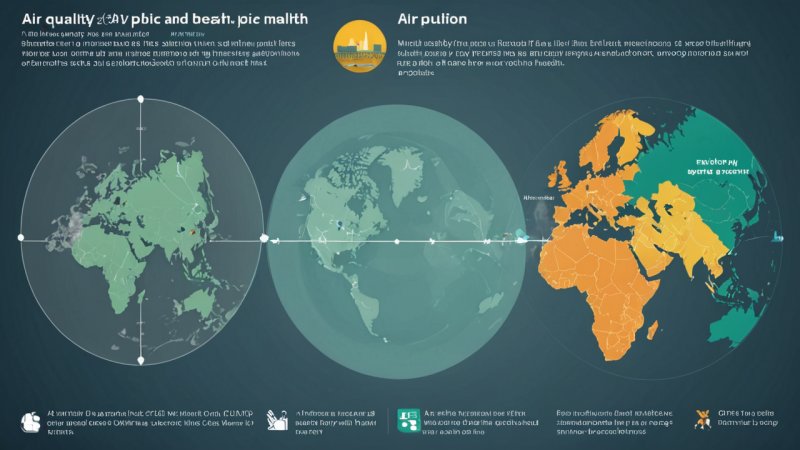Air quality is an essential aspect of our environment that directly influences public health. As urbanization and industrial activities increase, understanding the intricate relationship between air quality and health outcomes becomes crucial. This article explores the critical connections between air pollution, respiratory diseases, and overall well-being, shedding light on the latest research findings and their implications for policy and individual actions.
Understanding Air Pollution Sources
Air pollution originates from various sources, both natural and anthropogenic. Key contributors include:
- Vehicle Emissions: Cars and trucks release nitrogen oxides and particulate matter.
- Industrial Discharges: Factories emit volatile organic compounds (VOCs) and heavy metals.
- Agricultural Activities: Pesticides and fertilizers contribute to air contamination.
- Natural Events: Wildfires and dust storms can significantly degrade air quality.
Identifying these sources helps in developing targeted strategies for pollution reduction.
The Health Effects of Poor Air Quality
Exposure to polluted air has been linked to numerous health issues, including:
- Respiratory Diseases: Conditions like asthma, chronic bronchitis, and emphysema are exacerbated by poor air quality.
- Cardiovascular Problems: Studies show a strong correlation between air pollution and heart disease.
- Neurological Disorders: Emerging research suggests links between air pollution and cognitive decline.
- Premature Death: The World Health Organization estimates millions of deaths annually are attributable to air pollution.
Understanding these effects underscores the urgency of addressing air quality issues.
Vulnerable Populations
Certain groups are more susceptible to the adverse effects of air pollution, including:
- Children: Developing lungs and immune systems make them particularly vulnerable.
- The Elderly: Older adults often have pre-existing health conditions that can be worsened by pollution.
- Low-Income Communities: These populations may live in areas with higher pollution levels and have less access to healthcare.
- Individuals with Pre-existing Conditions: Those with asthma or heart disease face greater risks from poor air quality.
Addressing the needs of these vulnerable groups is essential for effective public health strategies.
Recent Research Trends
Recent studies have focused on innovative approaches to understanding and mitigating the effects of air pollution:
- Longitudinal Studies: Researchers are tracking health outcomes over time to establish clearer causal relationships.
- Technological Advances: Improved air quality monitoring technologies are providing real-time data.
- Policy Impact Studies: Evaluating the effectiveness of regulations, such as emissions standards, on public health outcomes.
- Community Engagement: Involving local communities in air quality monitoring and advocacy efforts.
These trends highlight a growing recognition of the importance of interdisciplinary approaches to air quality research.
Actionable Steps for Improvement
Individuals and communities can take several steps to improve air quality and protect public health:
- Advocacy: Support policies aimed at reducing emissions and improving air quality standards.
- Public Awareness: Educate others about the health effects of air pollution and ways to mitigate exposure.
- Sustainable Practices: Encourage the use of public transportation, carpooling, and biking to reduce vehicle emissions.
- Indoor Air Quality: Use air purifiers and maintain good ventilation to improve indoor air quality.
Collective action can lead to significant improvements in air quality and public health.
In conclusion, the relationship between air quality and public health is complex yet critical. Understanding the sources of air pollution, its health effects, and the vulnerabilities of specific populations is essential for developing effective interventions. Recent research trends indicate a shift towards comprehensive approaches that involve community engagement and technological advancements. By taking actionable steps, individuals can contribute to improving air quality and, consequently, public health outcomes.






